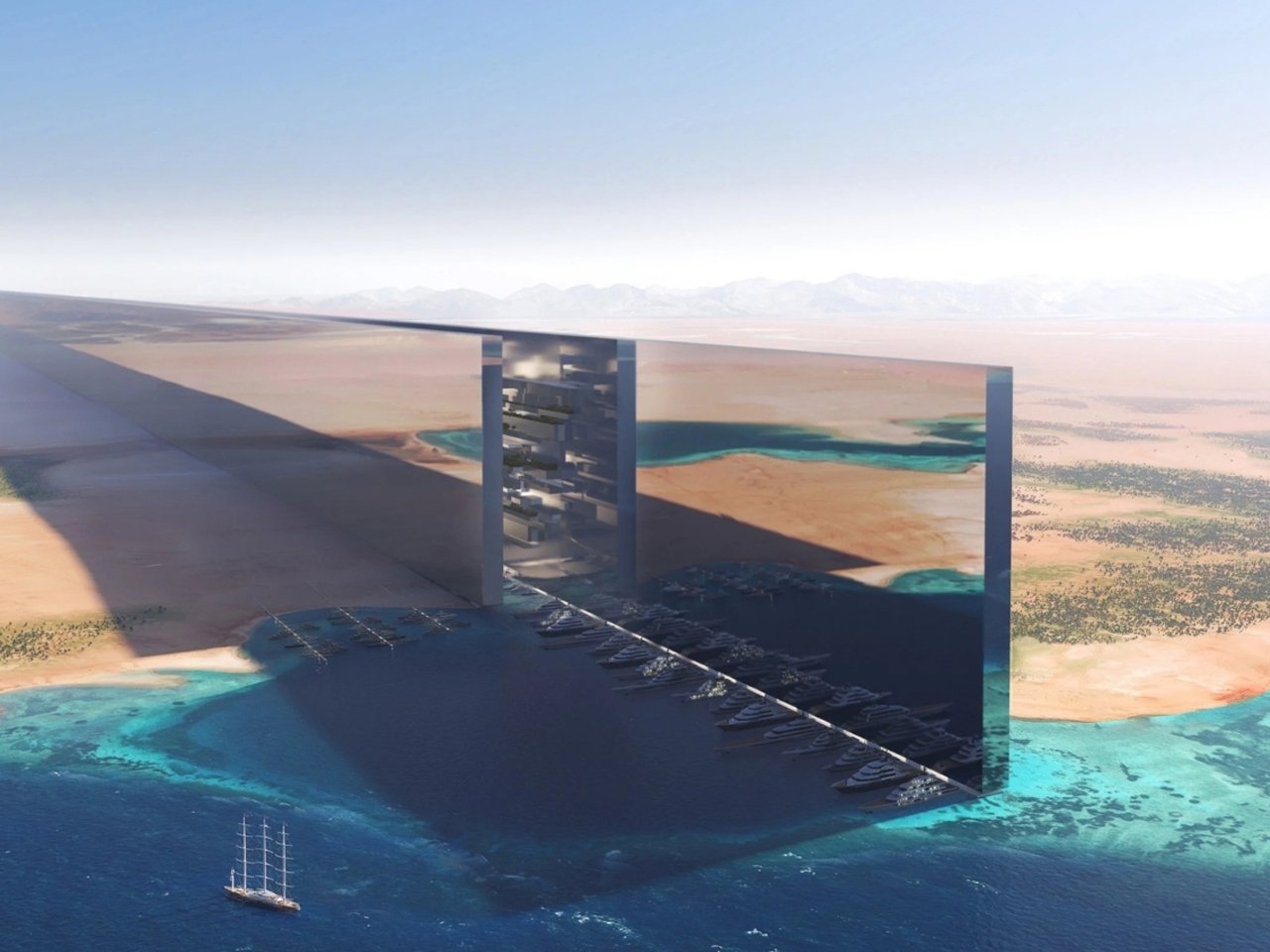In recent years, Saudi Arabia has carved out a global presence by honing in on key sectors like healthcare, education, infrastructure, tourism, energy, and IT. The country is putting a spotlight on modern urbanization, innovation, and sustainable growth. Through groundbreaking projects, it aims to establish new landmarks that promote economic diversification and environmental sustainability. As the world’s third-largest oil producer and leading oil exporter—boasting the second-largest oil reserves and sixth-largest natural gas reserves—Saudi Arabia has been a dominant energy force since discovering petroleum in 1938. Furthermore, the kingdom is significantly impacted by forging partnerships with global leaders, especially in tech and renewable energy.
As part of its Vision 2030 plan, Saudi Arabia is reducing its reliance on oil and diversifying its economy. The country is opening up to international tourism, positioning itself as a major tourist destination, and using sports as a tool for global visibility. Heavily investing in solar and wind energy projects, it aims to become a global powerhouse. These efforts are transforming Saudi Arabia into a dynamic economy with an impressive international presence. We have showcased some of Saudi Arabia’s ambitious projects that highlight its significant contribution to iconic buildings and urban developments making a mark on the global stage, let’s take a look.
1. World’s Largest Skyscraper
Saudi Arabia is constructing the Mukaab, an ambitious skyscraper in Riyadh that is set to become the world’s largest building. With a height of 1,312 feet, the cube-shaped structure will have equal length, width, and height and will have the capacity to fit 20 Empire State Buildings inside, according to the Saudi Government’s Public Investment Fund. Inspired by traditional Islamic architecture, its intricate exterior will contrast with a vast interior that covers 2 million square meters.
A twisting tower will be at the heart of the Mukaab, while the building will feature a holographic system displaying underwater and otherworldly scenes. This cutting-edge project is set for completion by 2030. Also, a temporary bridge is being built to connect the site, crossing King Khalid Road, to support construction. This will enable piling work to begin and reduce around 800,000 truck movements for earthworks, positively impacting surrounding infrastructure. The project is progressing rapidly and is set to transform Riyadh’s skyline, contributing significantly to Saudi Arabia’s Vision 2030 goals of modernization and economic diversification.
2. Future City
The Line is a groundbreaking megastructure that is being developed as a part of the larger Neom project – a futuristic city being built in Saudi Arabia’s Tabuk province. This futuristic city will stretch 170 kilometers, standing 500 meters tall and 200 meters wide, and is designed to house 9 million people. The city will feature a unique vertical layout with mirrored facades, creating a blend of residential, retail, leisure, and educational spaces, as well as parks and green areas. This design, known as Zero Gravity Urbanism, aims to offer an alternative to traditional urban living by fostering a closer connection to nature.
In addition to its innovative design, The Line will also incorporate a rapid transportation system, that allows residents to travel from one end of the city to the other in just 20 minutes. The entire development will be powered by sustainable energy and is part of Saudi Arabia’s strategy to diversify its economy and reduce reliance on oil. While still under construction, The Line represents a bold step toward building the cities of the future.
3. Largest Sports Stadium
Saudi Arabia has announced the King Salman Stadium and Masterplan which is a monumental project set to become the world’s largest stadium upon completion. Designed by Populous, it will be located in Riyadh, near an under-construction park. The stadium’s unique design mimics a seed germinating in the desert, featuring a circular structure with segmented sections, green walls, and walking paths on the roof. With a capacity of over 92,000 seats, it will be the largest in Saudi Arabia and one of the largest globally. It will also offer royal boxes, hospitality suites, 2,200 VIP seats, and 300 “VVIP” seats.
Some of the additional facilities include an aquatics center with an Olympic-sized pool, climbing walls, gardens, and a running track to name a few. The design is inspired by Saudi Arabia’s natural landscapes, and it symbolizes the nation’s commitment to nurturing sports participation. The stadium is set to be completed by the year 2029 and it will serve as the headquarters for the national soccer team and is part of a larger stadium development plan.
4. World’s Longest Driverless Metro System
Saudi Arabia is upgrading its transportation to an international level with the launch of the Riyadh Metro which is set to become one of the longest driverless metro systems in the world. The transportation system will span 109 miles, it will connect key districts, business centers, and cultural landmarks in Riyadh. Once the project is complete, it will carry 3.6 million passengers daily, reducing road traffic and cutting CO2 emissions by 12.5 million tons annually.
The network will feature 85 stations, including the striking King Abdullah Financial District (KAFD) Metro Station, designed by Zaha Hadid Architects. The fleet will consist of 69 Alstom Metropolis and 47 Innovia Metro electric trains, offering three classes with ergonomic seating, LED lighting, air-conditioning, and a passenger info system. The trains shall be fully automated, and equipped with advanced signaling, ensuring safe, smooth operations. Air-conditioned stations will have platform screen doors for added safety, and real-time updates will be available for passengers on board and at stations.
5. Luxurious Vacation Spots
Gidori, a groundbreaking project emerging in Saudi Arabia’s desert, offers a visionary escape blending modern luxury with stunning landscapes and outdoor recreation. Designed by Aedas, the development features 200 villas and homes seamlessly integrated into the natural surroundings, embracing the desert’s beauty. At the heart of Gidori lies the Monolith, an impressive beachfront complex with 190 cantilevered apartments, inspired by natural rock formations. The structure combines futuristic aesthetics with organic elegance, offering residents dining, retail spaces, and lush gardens.
Gidori blurs the line between architecture and nature and also promises a luxurious experience with a boutique hotel, an 18-hole championship golf course, and top-tier amenities. The architecture integrates with the surrounding landscape and the development encourages outdoor activities with hiking and cycling trails, water sports, and serene observation platforms for stargazing. This ambitious project also reflects Saudi Arabia’s Vision 2030, positioning the nation at the forefront of architectural innovation and sustainable luxury in the desert.
6. Superyacht Marina
Saudi Arabia’s Neom project has introduced Jaumur, a luxurious marina designed for superyachts which is set in a sophisticated community. The standout feature is the “aerofoil” shelter, shaped like an arrow, providing year-round sun protection. The marina will accommodate up to 300 superyachts, each up to 492 feet in length, with a gravity-defying cantilever forming a striking entrance. The space will also feature a vibrant promenade filled with entertainment, cultural events, retail stores, and world-class dining.
In addition to the marina, Jaumur will house 6,000 residents with 500 apartments and 700 luxury villas offering waterfront access and private moorings. The development will include green spaces, an international boarding school, two luxury hotels, and a deep-sea research center. The project is located in Saudi Arabia’s Gulf of Aqaba region and Jaumur aims to be a premier destination for yachting enthusiasts and luxury living. The project is designed by architects Liam Roberts and Terry McQuillan.
Saudi Arabia’s architectural ventures are reshaping its skyline and global image. Projects like the Mukaab in Riyadh symbolize the kingdom’s commitment to blending tradition with innovation. These monumental structures not only redefine urban landscapes but also fuel economic diversification and modernization in line with Vision 2030. As Saudi Arabia invests heavily in cutting-edge designs, renewable energy, and tourism, it opens up new avenues for international collaboration and cultural exchange. The nation is not just building iconic landmarks; it’s crafting a future that harmonizes heritage with progress, positioning itself as a dynamic player on the global stage of architecture and design.
The post Saudi Arabia’s Architectural Revolution And How it is Making a Global Impact first appeared on Yanko Design.

